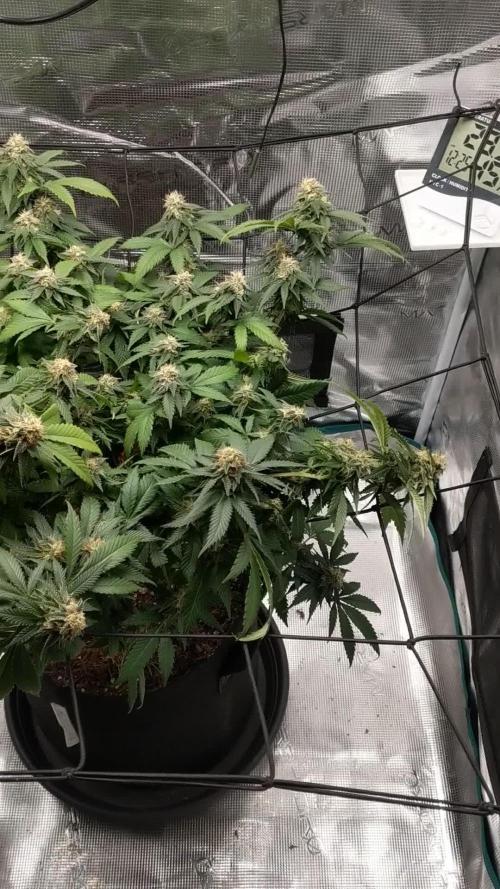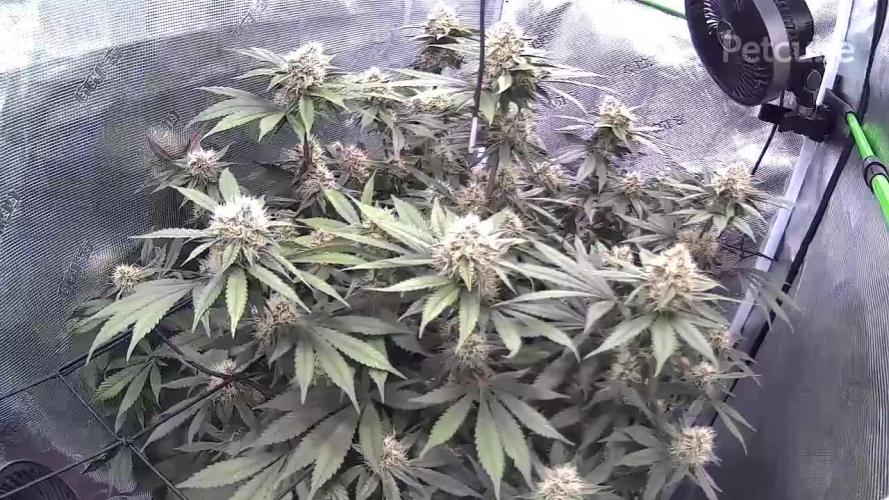The Grow Awards 2026 🏆 

























Processing
Likes
16
Share


@CityFarmer
Follow
Hello everyone,
Been busy this week working around the house so not much I can say. Heres a little video of there growing...
See you guys next week
Likes
10
Share


@theplantdaddy
Follow
Chopped her down day 66. She's hanging rn, will update you guys with the weight soon! Looking forward to trials! She smells nice and lemony and holy shit I got a ball of hash off the scissors. The size of a button but still amazing for such a small plant.
Likes
8
Share


@Grow_Mary_Green
Follow
Hi meine lieben, 🤗
Die Sämling-Phase hat begonnen...
In dieser Phase braucht es am meisten geduld, da der sämling noch recht empfindlich ist.
Wie mein Ablauf in dieser Woche genau aussah, habe ich hier für uns Dokumentiert. Ich wünsche dir viel Spaß & Happy Growing 🌱🤗:
______________________________________________________________________________
Umgebungswerte der Woche:
- Temperatur: 24°C
- Luftfeuchtigkeit: 80% - 75% zum Ende der Woche
- VDP (Room): 0,65
Tag 1:
- Licht eingestellt: PPFD: 100 µmol
- Lampen Entfernung auf 60cm
- Lichtzyklus: 18/6
Tag 2:
- Pflanzen Höhe gemessen: 7cm
- Licht eingestellt: PPFD: 155 µmol
Bewässert 👇(Nur Wasser):
- Volumen: 100ml
- PH-Wert: 6,0
- EC-Wert: 0,5
- Temperatur: 20°C
Tag 3:
- Nur beobachtet
Tag 4:
- Nur beobachtet
Tag 5:
- Licht gemessen (aktuell): PPFD: 165 µmol
- Pflanzen Höhe gemessen: 10cm
Tag 6:
- Nur beobachtet
Tag 7:
- Licht gemessen (aktuell): PPFD: 175 µmol
Bewässert 👇(Nur Wasser):
- Volumen: 200ml (120ml hätten auch gereicht)
- PH-Wert: 6,0
- EC-Wert: 0,5
- Temperatur: 21°C
Run-Off gemessen 👇(Drain):
- Volumen: 100ml
- PH-Wert: 5,9
- EC-Wert: 2,95
- Temperatur: 21°C
Likes
10
Share


@Jerrza
Follow
Last veg week, i shouldve went for 21 veg days but didnt know at the time i shouldve done that so instead i did 4 weeks
Likes
15
Share


@CanadianFillmore
Follow
Flushing begins for the Og kush and blueberry. All three plants are incredibly sticky, stanky, dense and heavy! The OG Kush plants are blowing my mind, I'm amazed at how much they have fattened up the last week.
The super lemon haze starts week 7 and is also sticky and stanky, she's also starting to pack on weight and density.
Likes
27
Share


@Wicked_Stix
Follow
I never know what to put here. Maybe thanks to the 2 people that look at my diaries?
Likes
15
Share


@Drgreenthumb627
Follow
Day 26, what can i say this plant is a beast, been a dream to grow and the structure on the plant is very desirable for my style of training. the terps on this one overpower all other smells when i open the tent.
Likes
2
Share


@4F1M6
Follow
This cut is from when I topped the mother. I put the top into a diy dwc bubble cloner. Took 6 days to see root nubs. After 8 days there was enough roots to plant the cutting. I planted the cutting in a 1 gallon fabric pot. Filled up the pot with sunshine mix #4. I preventative moistened the medium to avoid compaction and damage to the fresh and fragile new root system.
After just under a week of settling in to the medium. I had my first signs of new growth. Marking the first day of veg and the start of this diary. I also gently and very gradually bent her back and tied her down. Lst will be utilized through out this whole grow to get a full even canopy. Looking forward to it.
Until next update. Happy growing and stay lit fam.
Processing
Likes
25
Share


@Kikiwindsurf
Follow
30/04/2020 enjoy ! day 56 and 57of the gorillas. day49 Lemon Haze.
03/05/2020 I cant keep my HPS light working because of the heat... They will finish outdoors and, at my terrace, the maximum temperature registred was 39 fucking Celsius degrees so let´s see how she evolves ! I take a look at the crystals every single day because I know that because of the heat they can change of color very fast but its not the case, all the plants are very resistent. Top Candy and Bloom increasing, and i gave 3 doses of PK (52-34) and probably 1 or 2 more once a week.
Stay tunned !!
Likes
4
Share


@SuperGluedGrow
Follow
Week is going good aside from me accidently cutting off a stem on pheno 2. If I can properly save the cutting though I might have a chance at another female. Pheno 3 I'm hoping can make some comeback as I really want to flower the plant, its not dead by any means but the way its growing I just cant see it allowing itself to flower the top leaves were barely growing so I topped. Hopefully positive changes within the next week.
Likes
3
Share


@Dargaville_Dukes
Follow
Plant started drooping in the last couple of days. I'm not completely sure but think it's probably from over watering so I'll keep an eye on it over the next few days. Gave the plant another big defoliation and took off all the small stuff that I don't think will become decent buds. Going away for nine days next week so I'm trying to get the water right.
UPDATE: left the plant for 24 hrs and it continued to droop. Definitely under watering. Gave it 3 l litres and it's looking normal now.
Processing
Likes
8
Share


@CharasKush
Follow
I performed the first top to the plant. I will do a main lining a bit modified by keeping 2 sets instead of just 1. The plant after half a day from being topped started growing as hell!! I will probably transplant it in a few days.
And that's what I did by the end of the week. The pot had too big holse compered to the perlite I bought so I had to smallet 'em down with some tape.
I also topped the plant again. Wird three-end set came out of the topping but eveything staying on the plant is quite normal
Likes
24
Share


@KarlOlga
Follow
Keine Düngung mehr, etwas Bud Bleaching festgestellt- beleuchtungsintensität reduziert!
Ich denke nächste Woche wird geerntet.
Was meint ihr?
31.01: Wohl doch eher übernächste Woche! Produziert neue weiße Härchen und die Buds schwellen weiter an.




























